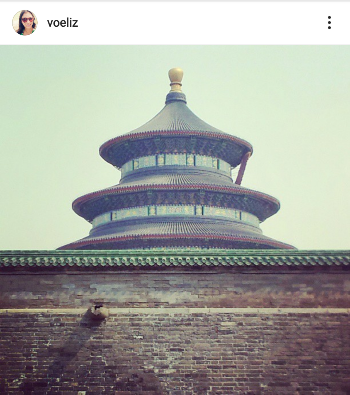Making infrastructure sexy

The Temple of Heaven, a favorite site for a kid living in 1990s Beijing, captured my imagination with its careful construction.
Working in 2007 as an engineering intern with Washington State’s Dept of Transportation— cataloging old boring piles for Seattle’s waterfront viaduct revamp— drew my attention to the behind-the-scenes efforts of large works.
The next year took me from current works to historic works. Wondering about the Naxi’s religious treatment of water, I studied the balance between old cultural infrastructures and new in Yunnan, China.
Later in Beijing at the turn of the decade, I worked alongside architects, engineers, and construction workers to design and build the built world itself. From there, I even tested the infrastructure necessary to motivate my own organization on our climate goals.
AND STILL, moving to the Bay Area in 2016 I puzzled over the pervasiveness of my term, Infrastructure, now rampant in software.

So highlights my interest in infrastructure, the underlying foundation of organizations and systems that enables things to persist and grow.
Over the past several years, I’ve become obsessed with 2 questions: (A) How can we make buildings more adaptable to the people within them? (B) How can learnings on infrastructure be better shared across disciplines?
For me, these questions are intertwined. Finding solutions to the latter has generative impacts for the former. Curiosity in the origins of building automation (my current focus, day-to-day) has led me to the history of control theory, systems thinking, fitness landscapes, cybernetics, and the misfit group responsible for coordinated thinking on communication and control (i.e. the Macy Conferences). Paired with constructs of incentive design and common pool resources (a la Elinor Ostrom), I’ve begun to wonder— how can we change the incentive structure by which buildings are designed, constructed, operated, and employed? To get there though, there’s a necessary detour I must first make: How can I personally facilitate lessons-sharing on infrastructure across varied disciplines?
Consensus says: Infrastructure is not sexy
Can infrastructure be sexy? I’ve struggled with this idea since I started to think more concretely (ugh I don’t like puns!) on the topic while studying civil/ environmental engineering in college. My friends and I would wander the bowels of the engineering school, poking fun at the Center for Advanced Cement Based Materials relegated to the basement. (I still feel guilty.) Working in China at a building design firm and visiting the occasional construction site, I viscerally understood that infrastructure wasn’t sexy. Later, in a change of heart during a startup event, I got on stage to declare “I’m here to make water sexy.”
I’ve waffled back and forth: Should infrastructure work seamlessly in the background or be palpable at the forefront? To quote Saul Griffith [1] infrastructure should be unconsciously easy: “we need to build infrastructure to solve the problem so we don’t have to think about the problem every day.” And yet, when we don’t think about our problems, we take their solving for granted. When our attention is not necessary for something, over time it’s our attention that thing needs the most. Perhaps this is why not having a physical office in Myanmar led Facebook to misunderstand the implications of their influence in the region. On the flip side, bring to attention a solid behind-the-scenes solution that counters our conventional approach (say— treating wastewater direct to drinkable / potable use) and society cannot take it. Even Singaporeans grumble about their reclaimed water station.
“Fast gets all our attention, slow has all the power,” says Stewart Brand. “If slow parts are not occasionally frustrating then they’re not doing their job. If you don’t respect them for that, then you don’t know how the world works.”
I’ve come to realize that maybe infrastructure is infrastructure because it’s unsexy. A tautology at its best. Without things successfully running in the background, how do we focus our attention on the day’s pertinent decisions? How do we build stable subsystems (like Herb Simon and my favorite watchmaker parable [2]) without infrastructure to hold the pieces together?
I agree with consensus that infrastructure is not and should not be sexy. But why can’t we build trigger mechanisms for a handful of infrastructural elements to be sexy, at least once in a while?
—
[1] http://longnow.org/seminars/02015/sep/21/infrastructure-and-climate-change/
[2] “Architecture of Complexity” by Herbert Simon
